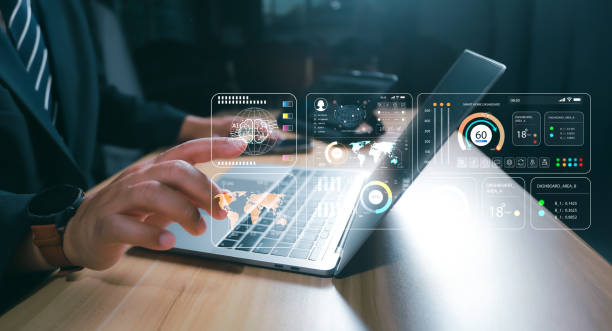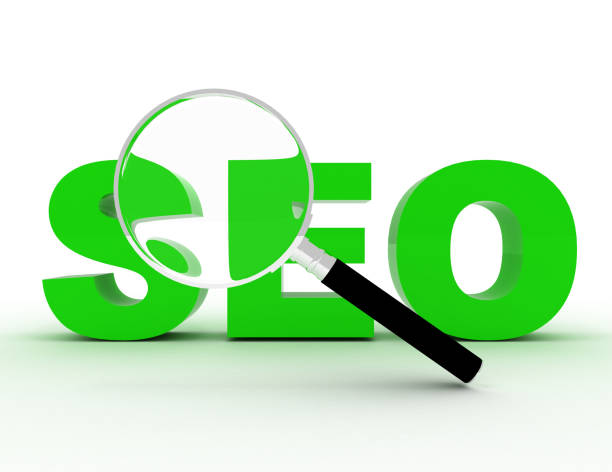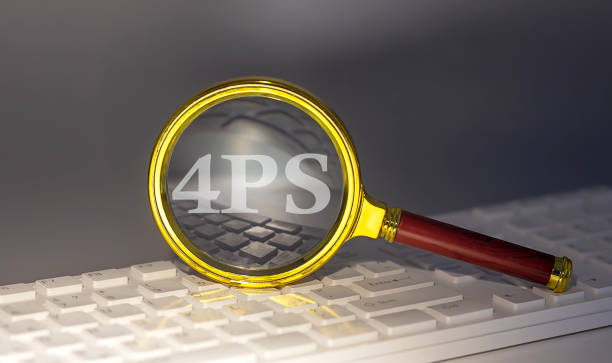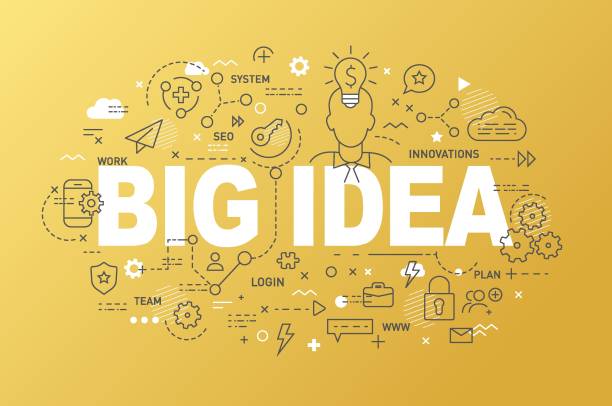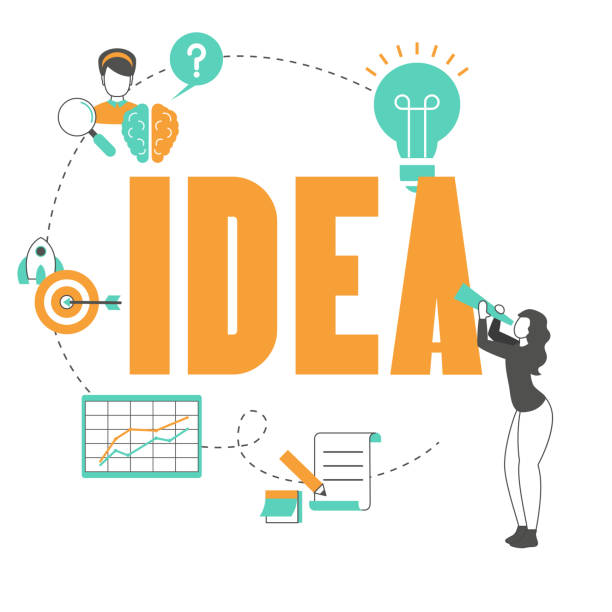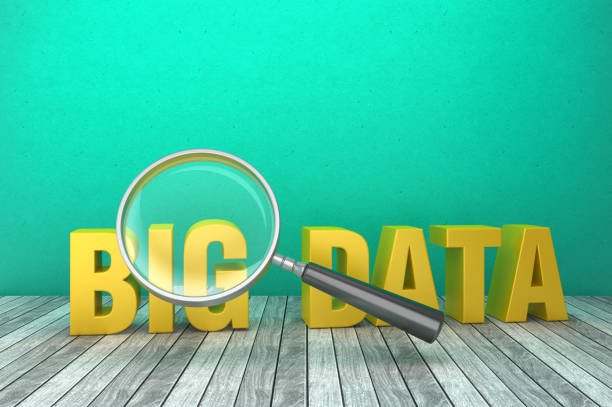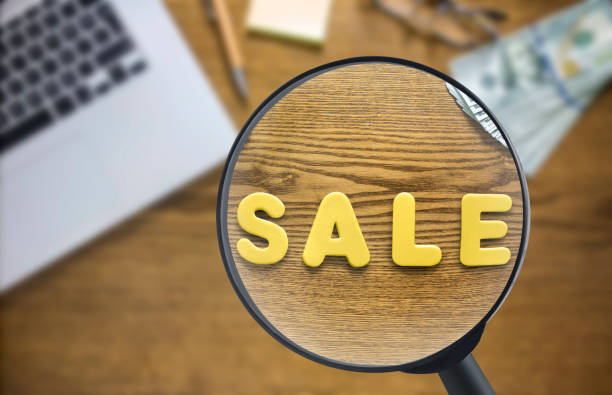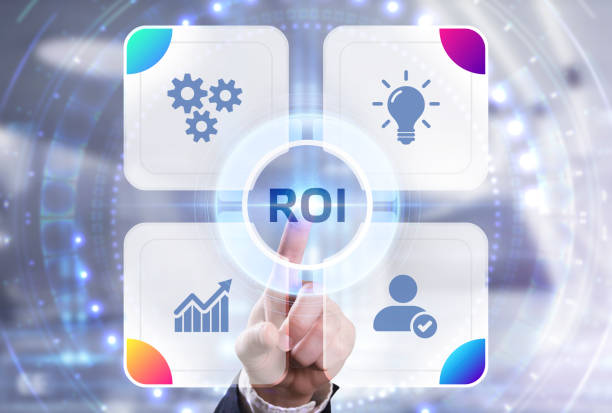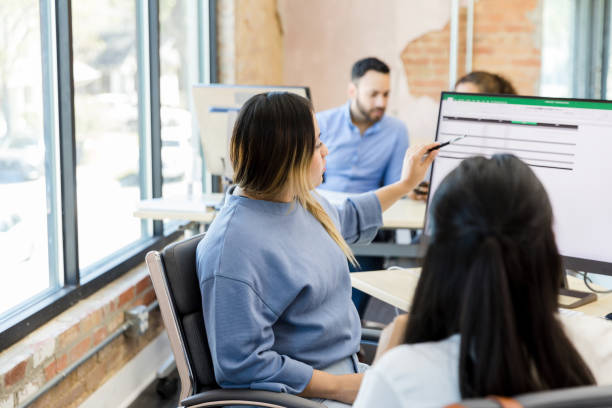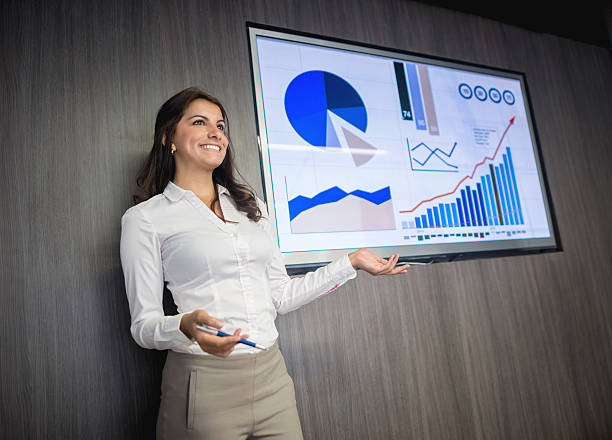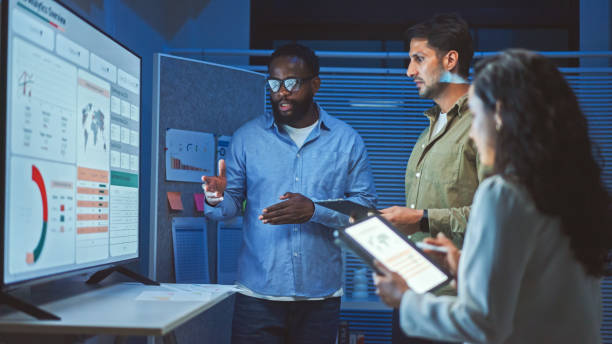What is On-Page SEO and Why Does it Matter?
On-Page SEO refers to a set of actions taken within your website to improve its ranking in search engines like Google.
These actions include content optimization, using appropriate keywords, improving site structure, and optimizing HTML tags.
The importance of on-page SEO lies in the fact that it helps search engines better understand your site’s content and display it to more relevant users.
By implementing solid on-page SEO, you can attract more organic traffic to your site and increase conversion rates.
Search engine optimization is a crucial process for online visibility, and on-page SEO is an important part of this process.
Many people mistake SEO for content marketing, but SEO is much more than that.
#Keywords play a very important role in this regard.
Choosing the right keywords and using them correctly in content and tags helps search engines better understand your site’s topic.
On the other hand, the site structure must be logical and user-friendly so that users can easily navigate your site and access the information they need.
Optimizing HTML tags also includes using title tags, meta descriptions, and heading tags correctly and with relevant keywords.
By taking these steps, you can show search engines that your site is a valuable and relevant resource for users.
On-page SEO directly impacts user experience, as a well-optimized site loads faster, is easier to navigate, and its content is more engaging for users.
As a result, users spend more time on your site, and the likelihood of them returning to your site increases.
So take on-page SEO seriously.
Does your current website convert visitors into customers or drive them away? Solve this problem forever with professional corporate website design by Rasaweb!
✅ Creating a powerful brand and credibility
✅ Attracting target customers and increasing sales
⚡ Get a free consultation now!
Keyword Research and Choosing the Best Ones for On-Page SEO
Keyword research is the first and most important step in on-page SEO.
Choosing appropriate keywords that are relevant to your business helps you attract more targeted traffic to your site.
To begin, create a list of keywords related to your products or services.
Then use keyword research tools like Ahrefs, Moz, and Ubersuggest to find keywords with high search volume and low competition.
Search volume shows how many users search for this keyword per month, and competition shows how difficult it is to rank high on Google for this keyword.
After finding the right keywords, categorize them into different groups based on topic and user intent.
For example, if you have an online clothing store, you can categorize keywords into “women’s clothing,” “men’s clothing,” and “children’s clothing.”
Also, look for long-tail keywords.
These keywords usually have lower search volume, but the competition for them is also lower, and the chance of attracting targeted traffic using them is higher.
For example, instead of the keyword “women’s clothing,” you can use the keyword “buy cheap women’s party dresses.”
Finally, save the selected keywords in an Excel file or Google Sheet and use them to optimize your content, tags, and other elements of your site.
Remember that keyword research is an ongoing process and you should regularly review new keywords and add them to your list.
On-page SEO will work stronger with the right keywords.
Content Optimization for On-Page SEO and Audience Engagement
Content is king! This phrase is often heard in the world of on-page SEO.
Quality and relevant content not only helps attract the audience but also helps improve your site’s ranking in search engines.
To optimize content, you must first make sure that your content is valuable and useful to users.
Create content that answers user questions, solves their problems, and provides them with new and useful information.
Use your selected keywords naturally in the text.
Try to use keywords in the title, meta description, heading tags, and main content.
But remember to avoid overusing your keywords, as this can damage your site’s SEO.
Divide your content into smaller sections and use heading tags (H1, H2, H3, etc.) to organize the content.
This helps users easily scan your content and access the information they need.
Use images and videos to make your content more engaging.
Images and videos can help improve understanding of content and increase the time users spend on your site.
Make sure your content is unique and original.
Avoid copying other people’s content, as this can damage your site’s SEO and may even result in your site being penalized by Google.
On-page SEO is incomplete without valuable and optimized content.
| Feature | Description |
|---|---|
| Keywords | Natural and relevant use in the text |
| Organization | Using heading tags (H1-H6) |
| Media | Using relevant images and videos |
| Originality | Unique and original content |
Click here to preview your posts with PRO themes ››
Optimizing Title Tags and Meta Descriptions
Title tags and meta descriptions are two important elements in on-page SEO that are displayed in Google search results.
The title tag shows the title of your page and should be engaging and relevant to the page’s content.
The meta description provides a summary of the page’s content and should encourage users to click on your link.
To optimize the title tag, use the page’s main keyword at the beginning of the title.
Your title should be a maximum of 60 characters so that it is fully displayed in search results.
To optimize the meta description, provide an engaging and useful summary of the page’s content.
Your meta description should be a maximum of 160 characters and include the page’s main keyword.
Title tags and meta descriptions must be unique for each page of your site.
Avoid using duplicate title tags and meta descriptions, as this can damage your site’s SEO.
Also, title tags and meta descriptions should match the content of the page.
Avoid misleading users by using irrelevant title tags and meta descriptions, as this can increase the bounce rate and damage your site’s SEO.
On-page SEO requires attention to these key details.
Are you worried that your company’s old website is driving away new customers? Rasaweb solves this problem with modern and efficient corporate website design.
✅ Increases your brand credibility.
✅ Helps attract targeted customers.
⚡ Contact Rasaweb for a free consultation!
Image Optimization for On-Page SEO
Images can play an important role in making your content more engaging and improving the user experience.
But in order for images to help your site’s SEO, you need to optimize them correctly.
First, you need to optimize your image file names.
Use descriptive and relevant names to the image content and use keywords in the file name.
For example, instead of the name “IMG_1234.jpg,” use the name “buy-women-s-party-dress.jpg.”
Then you need to fill in the ALT tag of your images.
The ALT tag is alternative text that is displayed if the image does not load.
The ALT tag should be descriptive and relevant to the image content and include the image’s main keyword.
You should also reduce the size of your images to increase the loading speed of your site’s pages.
Use image compression tools like TinyPNG or ImageOptim to reduce the size of your images.
Finally, use high-quality images.
Low-quality images can damage your site’s SEO and reduce the user experience.
On-page SEO will be more attractive with optimized images.
Improving Site Loading Speed for On-Page SEO
Site loading speed is an important factor in Google site ranking.
Users who wait for a web page to load are likely to leave the site and go to your competitors.
To improve site loading speed, you must first test your site speed using tools like Google PageSpeed Insights or GTmetrix.
These tools show you which parts of your site are causing slow loading and what actions you can take to improve speed.
Some of the steps you can take to improve site loading speed include: optimizing images, enabling Gzip compression, using content delivery networks (CDNs), reducing the number of HTTP requests, and optimizing HTML, CSS, and JavaScript code.
Also, you should use high-quality and fast hosting.
Inappropriate hosting can slow down your site loading and damage your site’s SEO.
On-page SEO is more successful with high speed.
Click here to preview your posts with PRO themes ››
Proper URL Structure and Its Impact on On-Page SEO
The URL structure of your site pages can also affect your site’s SEO.
Your URLs should be short, descriptive, and include the page’s main keywords.
Avoid using long and complex URLs.
Long and complex URLs are more difficult for users and search engines.
Use hyphens (-) instead of spaces ( ) in URLs.
Hyphens help search engines better understand the keywords in the URL.
Use lowercase letters in URLs.
Some servers are case-sensitive and may cause problems accessing your site’s pages.
Also, you should avoid changing your site’s page URLs for no reason.
If you have to change the URL of a page, be sure to use a 301 redirect to transfer users and search engines to the new URL.
On-page SEO will be more optimized with a proper URL structure.
Also, on-page SEO means introducing your website as a reference in Google.
By providing engaging and relevant content, your website will be a strong source of knowledge for Google.
| URL Feature | Description |
|---|---|
| Short and Descriptive | The URL should be concise and relevant to the content. |
| Using Hyphens | Replacing spaces with hyphens to distinguish words. |
| Lowercase Letters | Using lowercase letters for server compatibility. |
| No URL Changes | Avoiding unnecessary changes and using 301 redirects when necessary. |
Internal Linking and Its Importance in On-Page SEO
Internal linking means creating links between different pages of your site.
Internal linking helps users easily navigate your site and access the information they need.
Also, internal linking helps search engines better understand your site’s structure and identify the more important pages of your site.
When creating an internal link, use descriptive anchor text that is relevant to the destination page.
The anchor text should show users and search engines what page they will be taken to by clicking on the link.
Avoid creating too many links on one page.
The number of internal links on a page should be logical and proportional to the content of the page.
Also, you should pay more attention to linking to the more important pages of your site.
Pages that are more important to your business should receive more links from other pages of the site.
On-page SEO will be more powerful with smart linking.
Do you know that a weak company website takes away many opportunities from you every day? Solve this problem forever with professional corporate website design by Rasaweb!
✅ Creating a powerful and reliable image of your brand
✅ Attracting targeted new customers and increasing sales
⚡ [Get a free website design consultation]
Mobile Site Optimization and Its Impact on On-Page SEO
With the increasing use of mobile devices for searching the Internet, mobile site optimization is of particular importance.
Google gives better ranking to sites that are optimized for mobile.
To optimize your site for mobile, you must use responsive design.
Responsive design means that your site automatically adapts to the screen size of the user’s device.
Also, you need to improve your site’s loading speed on mobile devices.
Mobile users expect your site’s pages to load quickly.
Use readable fonts and large buttons on your site so that mobile users can easily use your site.
Finally, test your site on different mobile devices to make sure it is displayed correctly and there are no problems.
On-page SEO progresses with being mobile-friendly.
Nowadays, due to the increasing use of mobile phones, if a site is not responsive, it will quickly disappear from the competition.
On-Page SEO Tools and How to Use Them
To perform on-page SEO, you can use various tools.
These tools help you find the right keywords, optimize your content, improve your site speed, and track your site’s performance in search engines.
Some of the most popular on-page SEO tools include: Google Search Console, Google Analytics, Ahrefs, Moz, SEMrush, and Yoast SEO.
Google Search Console provides you with information about how your site is performing in Google.
Google Analytics provides you with information about your site’s traffic.
Ahrefs, Moz, and SEMrush are comprehensive tools that help you with keyword research, competitor analysis, and tracking your site’s rankings.
Yoast SEO is a WordPress plugin that helps you optimize your content for search engines.
Using these tools, you can perform on-page SEO on your site more effectively and improve your site’s ranking in search engines.
On-page SEO includes steps such as optimizing titles, meta descriptions, and the content of site pages so that search engines can easily identify site pages and display them in search results.
On-page SEO is an ongoing process that requires attention and effort.
Click here to preview your posts with PRO themes ››
Frequently Asked Questions
| Number | Question | Answer |
|---|---|---|
| 1 | What is On-Page SEO? | On-page SEO refers to a set of actions taken within a website and to optimize its pages to achieve a better ranking in search results. |
| 2 | What is the most important factor in on-page SEO? | Quality, relevant and comprehensive content that meets the user’s needs is the most important factor in on-page SEO. |
| 3 | What role does the Title Tag play in on-page SEO? | The title tag is one of the most important factors that tells search engines and users what the page content is about. It should include the main keyword and be engaging. |
| 4 | How important is the Meta Description tag? | Although it does not directly affect ranking, it is very effective on the click-through rate (CTR) in search results and encourages users to visit the page. |
| 5 | How is image optimization done in on-page SEO? | By using an appropriate alt tag, compressing the image size to increase loading speed and meaningfully naming the image file. |
| 6 | What is the importance of using headings (H1, H2, H3) in on-page SEO? | Headings help structure content, increase readability, and help search engines understand the hierarchy and subtopics of the content. |
| 7 | What does Internal Linking mean and what are its benefits? | Internal linking means creating links between different pages of a website. This helps distribute credibility, improve user navigation and assist search engine crawling. |
| 8 | Where should the Focus Keyword be placed on the page? | The main keyword should be placed in the title tag, meta description, H1, first paragraph, and naturally throughout the text and, if possible, in the URL address. |
| 9 | What effect does copied or duplicate content have on on-page SEO? | Duplicate content can damage site rankings and confuse search engines as to which version is the original and may detect it as spam. |
| 10 | How important is page loading speed in on-page SEO? | Page loading speed is an important ranking factor and directly affects user experience. Slow pages increase the user bounce rate. |
And other services of Rasa Web advertising agency in the field of advertising
Smart UI/UX: A combination of creativity and technology for digital branding by using real data.
Smart website development: An effective tool to analyze customer behavior with the help of smart data analysis.
Smart reportage: An effective tool to increase click-through rate with the help of smart data analysis.
Smart reportage: A dedicated service to grow user engagement based on the use of real data.
Smart customer journey map: A new service to increase digital branding through smart data analysis.
And more than hundreds of other services in the field of internet advertising, advertising consulting and organizational solutions
Internet Advertising | Advertising Strategy | Advertorial
Resources
What is Internal SEO and what is its importance?
,Internal Site SEO Training 1402 (All Internal Site SEO Tips)
,What is Internal SEO? Comprehensive On Page SEO Guide
,Internal Site SEO Training in a visual and comprehensive way
? Are you ready to transform your business in the digital space? Rasa Web Digital Marketing Agency, with years of experience and expertise in professional website design, SEO, and comprehensive digital strategies, offers innovative solutions for your sustainable growth and success.
📍 Tehran, Mirdamad Street, next to the Central Bank, South Kazerun Alley, Ramin Alley No. 6


